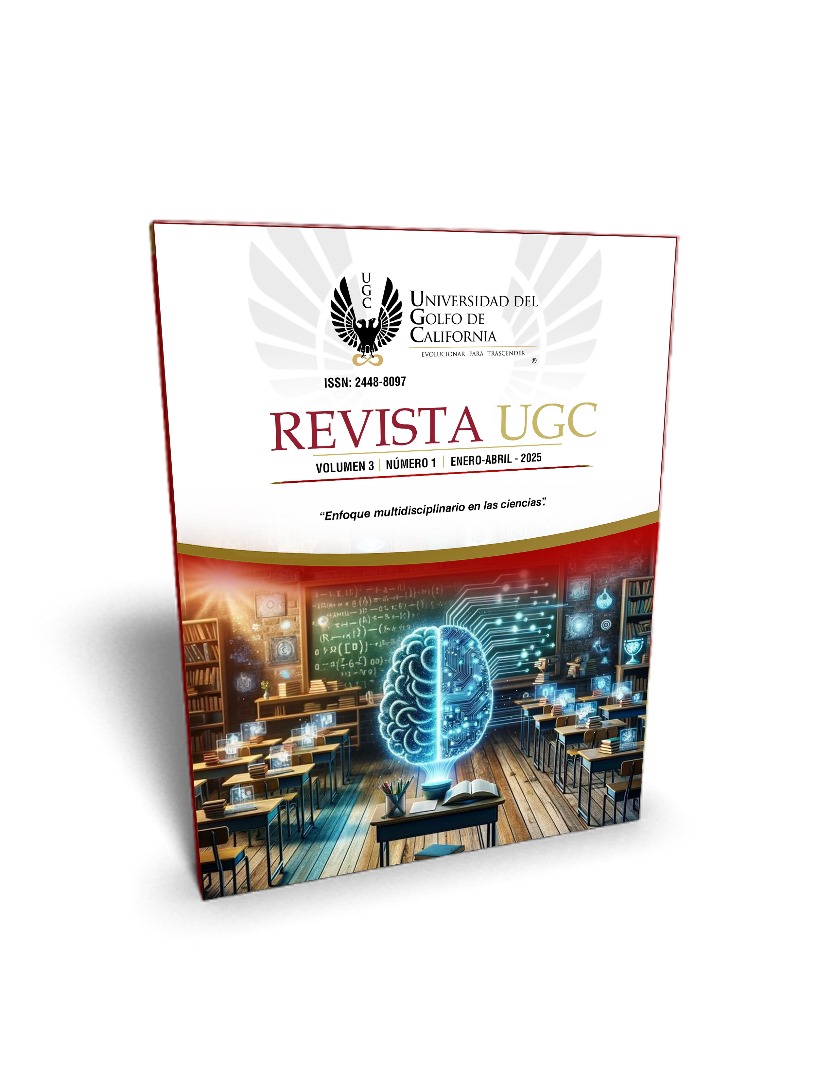Metabolic biochemical parameters in obese diabetics undergoing bariatric surgery. A systematic review
Keywords:
Metabolic biomarkers, type 2 diabetes mellitus, obesity, bariatric surgeryAbstract
The worst metabolic consequence of obesity is type 2 diabetes mellitus (DM2), which substantially increases morbidity and mortality, leading to diabesity. Bariatric surgery has proven to be an effective method to achieve DM2 remission in people with obesity, providing long-lasting metabolic control and decreasing drug dependence. The aim of the study was to analyze metabolic biochemical parameters in patients with obesity before and after bariatric surgery. A systematic review was conducted, taking as sources of information scientific articles published in specialized databases such as Pubmed, Cochrane library, Scielo, and Google scholar. A search strategy based on Mesh/DeCS terms and Boolean operators was followed. Articles from 2019-2024 were included, with adult patients with type 2 diabetes mellitus and obesity (BMI ≥ 30 kg/m²), undergoing bariatric surgery, where the effects of surgery on metabolic parameters such as glucose, insulin, Homa-IR index, glycated hemoglobin (HbA1c) and C-peptide before and after bariatric surgery are investigated. The PRISMA methodology was followed. 2014 articles were identified, of which 12 were selected. In all the articles analyzed, a significant reduction in the values of glucose, insulin, HbA1c, HOMA-IR index and C-peptide after surgery is reported; In addition, complete diabetes remission was reported to be more likely among those who received gastric bypass. Evidence is provided of the effect of bariatric surgery on metabolic biomarkers of DM2, which positions it as an effective and safe option for patients with diabetes.
Downloads
References
Brzozowska, M. M., Isaacs, M., Bliuc, D., Baldock, P. A., Eisman, J. A., White, C. P., Greenfield, J. R., & Center, J. R. (2023). Effects of bariatric surgery and dietary intervention on insulin resistance and appetite hormones over a 3 year period. Scientific Reports, 13(1), 6032–6048. https://doi.org/10.1038/s41598-023-33317-6
Casas, C., Araujo, R. V., Saavedra, L., Bert, A., Piscoya, A., & Casas, A. (2020). Índice HOMA-IR como predictor de reducción de exceso de peso en pacientes con índice de masa corporal (IMC) ≥ 35 kg/m2 sometidos a gastrectomía vertical. Cirugía Española, 98(6), 328–335. https://doi.org/10.1016/j.ciresp.2019.12.002
Chaiyasoot, K., Sakai, N. S., Zakeri, R., Makaronidis, J., Crisóstomo, L., Alves, M. G., Gan, W., Firman, C., Jassil, F. C., Hall-Craggs, M. A., Taylor, S. A., & Batterham, R. L. (2023). Weight-loss Independent Clinical and Metabolic Biomarkers Associated with Type 2 Diabetes Remission Post-bariatric/metabolic Surgery. Obesity Surgery, 33(12), 3988–3998. https://doi.org/10.1007/s11695-023-06905-8
De Cleva, R., Kawamoto, F., Borges, G., Caproni, P., Cassenote, A. J. F., & Santo, M. A. (2021). C-peptide level as predictor of type 2 diabetes remission and body composition changes in non-diabetic and diabetic patients after Roux-en-Y gastric bypass. Clinics, 76(2). https://doi.org/10.6061/clinics/2021/e2906
Di Fermo, A., Castillo, M., Bosio, L., Santamaria, J., Sforza, N., Meo Guzman, N., Errasti, A. G., Gimenez, C., Hansen, M., Faingold, M. C., & Musso, C. (2021). Comparación de parámetros metabólicos en pacientes adultos y ancianos sometidos a cirugía bariátrica: Una cohorte prospectiva. Revista Española de Nutrición Humana y Dietética, 25(1), 18–28. https://doi.org/10.14306/renhyd.25.1.1036
Hofsø, D., Fatima, F., Borgeraas, H., Birkeland, K. I., Gulseth, H. L., Hertel, J. K., Johnson, L. K., Lindberg, M., Nordstrand, N., Cvancarova Småstuen, M., Stefanovski, D., Svanevik, M., Gretland Valderhaug, T., Sandbu, R., & Hjelmesæth, J. (2019). Gastric bypass versus sleeve gastrectomy in patients with type 2 diabetes (Oseberg): a single-centre, triple-blind, randomised controlled trial. The Lancet Diabetes & Endocrinology, 7(12), 912–924. https://doi.org/10.1016/S2213-8587(19)30344-4
Insenser, M., Vilarrasa, N., Vendrell, J., & Escobar-Morreale, H. F. (2021). Remission of Diabetes Following Bariatric Surgery: Plasma Proteomic Profiles. Journal of Clinical Medicine, 10(17). https://doi.org/10.3390/jcm10173879
Ji, Y., Lee, H., Kaura, S., Yip, J., Sun, H., Guan, L., Han, W., & Ding, Y. (2021). Effect of Bariatric Surgery on Metabolic Diseases and Underlying Mechanisms. Biomolecules, 11(11). https://doi.org/10.3390/biom11111582
Kehagias, D., Georgopoulos, N., Habeos, I., Lampropoulos, C., Mulita, F., & Kehagias, I. (2023). The role of the gastric fundus in glycemic control. Hormones, 22(2), 151–163. https://doi.org/10.1007/s42000-023-00429-7
Kirwan, J. P., Courcoulas, A. P., Cummings, D. E., Goldfine, A. B., Kashyap, S. R., Simonson, D. C., Arterburn, D. E., Gourash, W. F., Vernon, A. H., Jakicic, J. M., Patti, M. E., Wolski, K., & Schauer, P. R. (2022). Diabetes Remission in the Alliance of Randomized Trials of Medicine Versus Metabolic Surgery in Type 2 Diabetes (ARMMS-T2D). Diabetes Care, 45(7), 1574–1583. https://doi.org/10.2337/dc21-2441
Kwon, Y., Jang, M., Lee, Y., Ha, J., & Park, S. (2021). Metabolomic Analysis of the Improvements in Insulin Secretion and Resistance After Sleeve Gastrectomy: Implications of the Novel Biomarkers. Obesity Surgery, 31(1), 43–52. https://doi.org/10.1007/s11695-020-04925-2
McGlone, E. R., Carey, I., Veličković, V., Chana, P., Mahawar, K., Batterham, R. L., Hopkins, J., Walton, P., Kinsman, R., Byrne, J., Somers, S., Kerrigan, D., Menon, V., Borg, C., Ahmed, A., Sgromo, B., Cheruvu, C., Bano, G., Leonard, C., … Khan, O. A. (2020). Bariatric surgery for patients with type 2 diabetes mellitus requiring insulin: Clinical outcome and cost-effectiveness analyses. PLOS Medicine, 17(12). https://doi.org/10.1371/journal.pmed.1003228
Michaelidou, M., Pappachan, J. M., & Jeeyavudeen, M. S. (2023). Management of diabesity: Current concepts. World Journal of Diabetes, 14(4), 396–411. https://doi.org/10.4239/wjd.v14.i4.396
Organización Panamericana de la Salud. (2023). Diabetes. https://www.paho.org/es/temas/diabetes
Ozmen, M. M., Guldogan, C. E., & Gundogdu, E. (2020). Changes in HOMA-IR index levels after bariatric surgery: Comparison of Single Anastomosis Duodenal Switch-proximal approach (SADS-p) and One Anastomosis Gastric Bypass-Mini Gastric Bypass (OAGB-MGB). International Journal of Surgery, 78, 36–41. https://doi.org/10.1016/j.ijsu.2020.04.008
Page, M. J., McKenzie, J. E., Bossuyt, P. M., Boutron, I., Hoffmann, T. C., Mulrow, C. D., Shamseer, L., Tetzlaff, J. M., Akl, E. A., Brennan, S. E., Chou, R., Glanville, J., Grimshaw, J. M., Hróbjartsson, A., Lalu, M. M., Li, T., Loder, E. W., Mayo-Wilson, E., McDonald, S., … Moher, D. (2021). The PRISMA 2020 statement: an updated guideline for reporting systematic reviews. Systematic Reviews, 10(1), 89. https://doi.org/10.1186/s13643-021-01626-4
Pereyra, A., Gonzalez, E., Vergara, E., & Perez-Morales, O. (2022). Remisión de Diabetes tipo 2 en pacientes Sometidos a Cirugía Bariátrica (Bypass Gástrico vs Gastrectomía Vertical) en el Hospital Central Militar. Revista de Sanidad Militar, 76(1), 63–69. https://doi.org/10.56443/rsm.v76i1.269
Purnell, J. Q., Dewey, E. N., Laferrère, B., Selzer, F., Flum, D. R., Mitchell, J. E., Pomp, A., Pories, W. J., Inge, T., Courcoulas, A., & Wolfe, B. M. (2021). Diabetes Remission Status During Seven-year Follow-up of the Longitudinal Assessment of Bariatric Surgery Study. The Journal of Clinical Endocrinology & Metabolism, 106(3), 774–788. https://doi.org/10.1210/clinem/dgaa849
Rega, G., Kaun, C., Jaegersberger, G., Prager, M., Hackl, M., Demyanets, S., Wojta, J., & Hohensinner, P. J. (2020). Roux-en-Y-Bariatric Surgery Reduces Markers of Metabolic Syndrome in Morbidly Obese Patients. Obesity Surgery, 30(2), 391–400. https://doi.org/10.1007/s11695-019-04190-y
Salman, M., Rabiee, A., Salman, A., Elewa, A., Tourky, M., Mahmoud, A. A., Moustafa, A., El-Din Shaaban, H., Ismail, A. A., Noureldin, K., Issa, M., Farah, M., Barbary, H., Elhaj, M. G. F., & Omar, H. S. E. (2022). Predictors of type-2 diabetes remission following bariatric surgery after a two-year follow-up. Asian Journal of Surgery, 45(12), 2645–2650. https://doi.org/10.1016/j.asjsur.2021.12.070
Teh, J. L., Leong, W. Q., Tan, Y. Z., So, J. B.-Y., Kim, G., & Shabbir, A. (2020). Effect of bariatric surgery on glycemic profiles in multiethnic obese nondiabetic Asians. Surgery for Obesity and Related Diseases, 16(3), 422–430. https://doi.org/10.1016/j.soard.2019.11.017
Valentí, V., Cienfuegos, J. A., Becerril Mañas, S., & Frühbeck, G. (2020). Mechanism of bariatric and metabolic surgery: beyond surgeons, gastroenterologists and endocrinologists. Revista Española de Enfermedades Digestivas, 112. https://doi.org/10.17235/reed.2020.6925/2020
Villarreal, J., Cuellar, R., Castillo, E., Luna, E., García, G., & Elizondo, L. (2021). Metabolic shift precedes the resolution of inflammation in a cohort of patients undergoing bariatric and metabolic surgery. Scientific Reports, 11(1), 121–127. https://doi.org/10.1038/s41598-021-91393-y
Yoshino, M., Kayser, B. D., Yoshino, J., Stein, R. I., Reeds, D., Eagon, J. C., Eckhouse, S. R., Watrous, J. D., Jain, M., Knight, R., Schechtman, K., Patterson, B. W., & Klein, S. (2020). Effects of Diet versus Gastric Bypass on Metabolic Function in Diabetes. New England Journal of Medicine, 383(8), 721–732. https://doi.org/10.1056/NEJMoa2003697
Yu, H., Ho, M., Liu, X., Yang, J., Chau, P. H., & Fong, D. Y. T. (2022). Association of weight status and the risks of diabetes in adults: a systematic review and meta-analysis of prospective cohort studies. International Journal of Obesity, 46(6), 1101–1113. https://doi.org/10.1038/s41366-022-01096-1
Downloads
Published
How to Cite
Issue
Section
License
Copyright (c) 2025 Verónica Fernanda Veintimilla-Verdezoto, Diego Raúl Bonifaz-Díaz

This work is licensed under a Creative Commons Attribution-NonCommercial 4.0 International License.
Los autores conservan los derechos de autor, garantizando a la Revista el derecho a la primera publicación del trabajo. Los autores ceden a la Revista los derechos de explotación de la obra autorizándola a la distribución y comunicación pública con fines no comerciales. Los autores conservan los derechos morales sobre la obra publicada. Los derechos patrimoniales le corresponden a la Revista.






